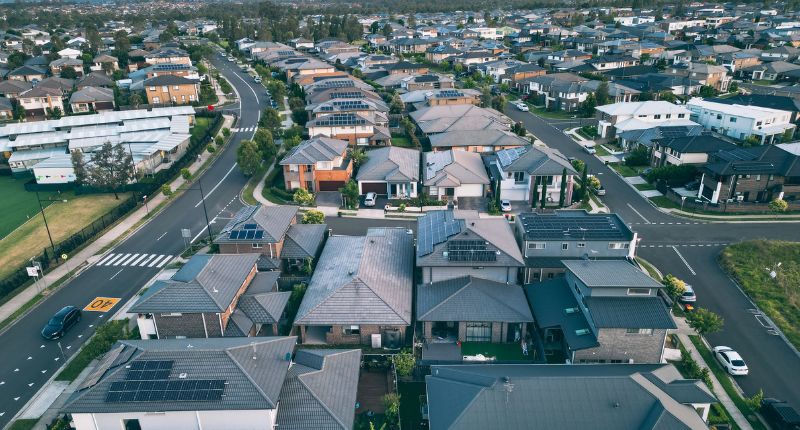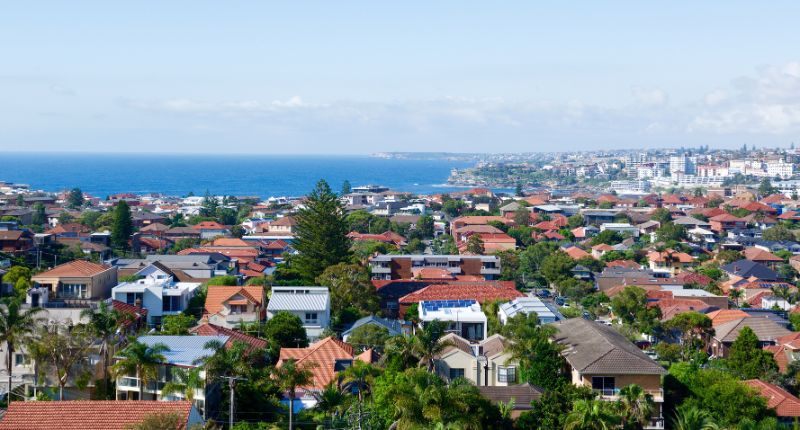
- Slowest monthly gain in November hints at potential turnaround in Australia's housing market.
- 'V'-shaped recovery, with 8.3% growth in housing values over the past 10 months.
- Regional and capital growth rates converge in November, marking a shift in home value trends.
This November marked a slow month for home values across the eastern states, a sign that Australia’s housing market may be witnessing the beginnings of a long-overdue turnaround, according to CoreLogic’s latest Hedonic Home Value Index (HVI) report.
Slowest month for home values since recovery phase
Last month, the nation saw its lowest monthly gain since the start of the February growth cycle, with a 0.6% rise in home values.
Change in dwelling values (index results as of 30 November 2023)
| Location | Month | Quarter | Annual | Total Return | Median Value |
|---|---|---|---|---|---|
| Sydney | 0.3% | 1.8% | 10.2% | 13.4% | $1,125,533 |
| Melbourne | -0.1% | 0.6% | 3.0% | 6.4% | $779,914 |
| Brisbane | 1.3% | 3.9% | 10.7% | 15.4% | $779,270 |
| Adelaide | 1.2% | 3.9% | 7.6% | 11.9% | $704,267 |
| Perth | 1.9% | 5.4% | 13.5% | 18.9% | $646,520 |
| Hobart | -0.1% | 0.1% | -3.0% | 1.2% | $656,568 |
| Darwin | -0.3% | -0.7% | -1.5% | 4.7% | $496,792 |
| Canberra | 0.5% | 1.1% | -0.3% | 3.7% | $842,677 |
| Combined Capitals | 0.6% | 2.2% | 8.2% | 12.0% | $827,659 |
| Combined Regional | 0.6% | 1.8% | 3.4% | 7.9% | $602,645 |
| National | 0.6% | 2.1% | 7.0% | 11.0% | $753,654 |
Source: CoreLogic.
Still, the national HVI reached a new peak in November. Having slumped by 7.5% from the April 2022 peak till January 2023, housing values have grown by 8.3% over the past 10 months, showing signs of a ‘V’ shaped recovery.
Though the growth has since lost steam, multi-speed conditions have emerged across the capitals.
Three capitals have recorded declines in home values over the month, with Melbourne, Hobart and Darwin down 0.1%, 0.1% and 0.3% respectively. Additionally, Sydney’s home value growth tumbled to 0.3%, the lowest monthly gain seen through the recovery cycle.
However, Sydney’s growth fell into negative territory over the last week of the month, signalling it may join Melbourne, with home values levelling off or falling further in December.
Multi-speed conditions present
Conversely, Perth home values catapulted in November, recording its most significant monthly gain since March 2021 of 1.9%. Meanwhile, Brisbane and Adelaide also had robust and accelerated growth, at 1.3% and 1.2% respectively.
CoreLogic research Director, Tim Lawless, explained that these cities bucked the trend due to their substantially low number of listings and purchasing activity beyond the norm.
“This imbalance between available supply and demonstrated demand is keeping strong upwards pressure on housing values across these markets, despite the downside factors leading to weaker housing market conditions across the lower eastern seaboard,” Lawless said.
“The Melbourne Cup Day rate hike has clearly taken some heat out of the market, but other factors like rising advertised stock levels, worsening affordability and persistently low consumer sentiment are also acting as a drag on value growth in some markets,” he said.
The more pricey, upper quartiles of the housing market in Sydney and Melbourne have seen a pronounced slowdown, posting the lowest growth rate on a monthly and rolling quarterly basis.
“The more expensive end of the market tends to lead the cycles in these cities,” Lawless said.
“As borrowing capacity reduces, we may be seeing more demand deflected towards lower housing price points, with the broad middle of the market now recording the strongest rate of growth in Sydney and Melbourne.”
Tim Lawless, CoreLogic
Regions closing in on the capitals
Additionally, the difference between regional and capital growth rates has dissipated, with the combined capitals and combined regionals index logging 0.6% growth last month. This was a significant change as capital cities had outpaced their regional counterparts through the home value rebound period.
Change in dwelling values to end of October 2023

“While housing values across both of these broad regions found a floor in January, the combined capitals index has since increased by more than double the combined regionals index, up 9.6% and 4.3% respectively to the end of November,” Lawless said.
Regional Australia’s home values were still 1.8% under the historic peak in May 2022, with Regional Victoria and Regional New South Wales (NSW) experiencing the biggest gap from record levels.







